The All Round Cord was a Guide Award from 1910 until 1993. From 1910 to 1979, it was an intermediate award, earned after First Class, but ranking lower than the Silver Fish, Gold Cord and Canada Cord. Between 1979 and 1993, the All Round Cord was the highest award a Guide could earn. The All Round Cord was discontinued in 1993.
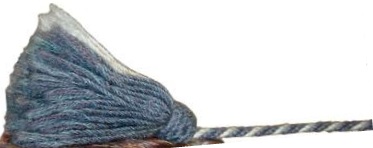 The first Guiding Publication, The Scheme for Girl Guides, also known as “Pamphlets A and B”, was published in November 1909 by Robert and Agnes Baden-Powell. This was our first introduction to the All Round Cord:
The first Guiding Publication, The Scheme for Girl Guides, also known as “Pamphlets A and B”, was published in November 1909 by Robert and Agnes Baden-Powell. This was our first introduction to the All Round Cord:
“All Round” shoulder cord for passing any seven of above.
‘Above’ referred to the list of 22 Efficiency Badges that Guides could earn: Ambulance, Naturalist, Hospital Nurse, Cook, Cyclist, Matron, Nurse, Musician, Farmer, Gymnast, Electrician, Needle Woman, Clerk, Florist, Artist, Laundress, Telegraphist, Swimmer, Interpreter, Pioneer, Signaller, and Sailor.
The first handbook How Girls Can Help to Build Up the Empire, published in 1912, expanded the requirements slightly to:
“All-Round-Shoulder-Cords” can be worn by a “First-class Guide” for passing any seven of the above tests, and show a “Union Jack” made by herself.
Efficiency Badges had become Proficiency Badges, and the list now included 26 Badges: Artist, Boatswain, Clerk, Cook, Cyclist, Child Nurse, Dairymaid, Electrician, Florist, Fire Brigade, Flyer, Gymnast, Horsemanship, Interpreter, Laundress, Matron, Musician, Needlewoman, Naturalist, Pathfinder, Pioneer, Rifle Shot, Sick Nurse, Signaller, Swimmer, and Telegraphist.
 At this time, the All Round Cord was a stepping stone to the Order of the Silver Fish, but not a pre-requisite.
At this time, the All Round Cord was a stepping stone to the Order of the Silver Fish, but not a pre-requisite.
According to Rules, Policy & Organization for 1921 and 1927, the requirements had only changed slightly:
[All Round Cords] Can be worn by any Guide having passed the First Class and any other seven tests, in addition to those included in First Class.
There are now many more Proficiency Badges to choose from, 53 in 1921, rising to 60 in 1927. But Ambulance or Sick Nurse, Child Nurse, Cook and Needlewoman could not be counted as they were required for the First Class Badge. In 1927 a note has been added that holders of the Green First Class Badge do not qualify for the All Round Cord. The Green First Class was considered a lower grade of First Class Badge, earned by those who could not learn to swim due to lack of facilities.
Although still not a pre-requisite, the All Round Cord would be earned by Guides as they worked towards the Gold Cord.
The first major change in requirements for the All Round Cord occurs in 1931 (Rules, Policy & Organization), when it became necessary for holders to earn an outdoor-based 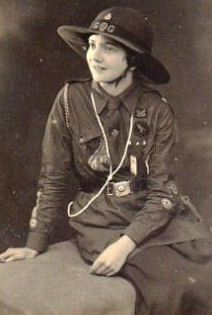 Proficiency Badge:
Proficiency Badge:
[All Round Cords] Can be worn by any Guide having passed her First Class and any other seven tests (to include one of the following: Astronomer, Bird Lover, Boatswain, Swimmer, Gardener, Geologist, Hiker, Land Worker, Naturalist, Pathfinder, Pioneer, Sportswoman, Surveyor, Campcraft, Bee-farmer, or an equivalent senior test), in addition to those included in the First Class.
This is slightly modified by 1934 (Rules, Policy & Organization) to:
All Round Cords can be worn by any Guide having passed her First Class and any other seven tests (one of which must be an outdoor badge), in addition to those included in the First Class.
The total Proficiency Badges had risen to 64 in 1931, dropping to 62 in 1934 and 1935. Ambulance or Sick Nurse, Child Nurse, Cook and Needlewoman still could not be counted as they were required for the First Class Badge, nor do holders of the Green First Class Badge qualify for the All Round Cord.
Another change occurs in 1939 (Policy, Organization and Rules), adding a second required badge in response to changes to the First Class Badge:
All Round Cords can be worn by any Guide having passed her First Class and any other seven tests (one of which must be the Ambulance, Sick Nurse or Emergency Helper badge, and one an outdoor badge), in addition to those included in the First Class.
There were 70 Proficiency Badges to choose from. The First Class Badge now required only the Child Nurse, Cook and Needlewoman Badges, but the Green First Class Badge still does not qualify a Guide for the All Round Cord.
By 1943 (Policy, Organization and Rules), the requirements had been significantly changed, and the All Round Cord was now a pre-requisite for the Gold Cord.
The candidate must be a First Class Guide and hold:
- Ambulance or Sick Nurse or Emergency Helper
- Swimmer or Signaller
- Two other badges, chosen by herself, or which one at least must be one of the following outdoor badges: Birdlover, Boatswain, Farmworker, Flower Lover, Gardener, Hiker, Horsewoman, Naturalist, Pathfinder, Pioneer, Star Lover, Woodman.
The All Round Cord is discontinued c.1947 and does not appear in Policy, Organization and Rules for 1948, 1950, 1953, or 1956. The All Round Cord 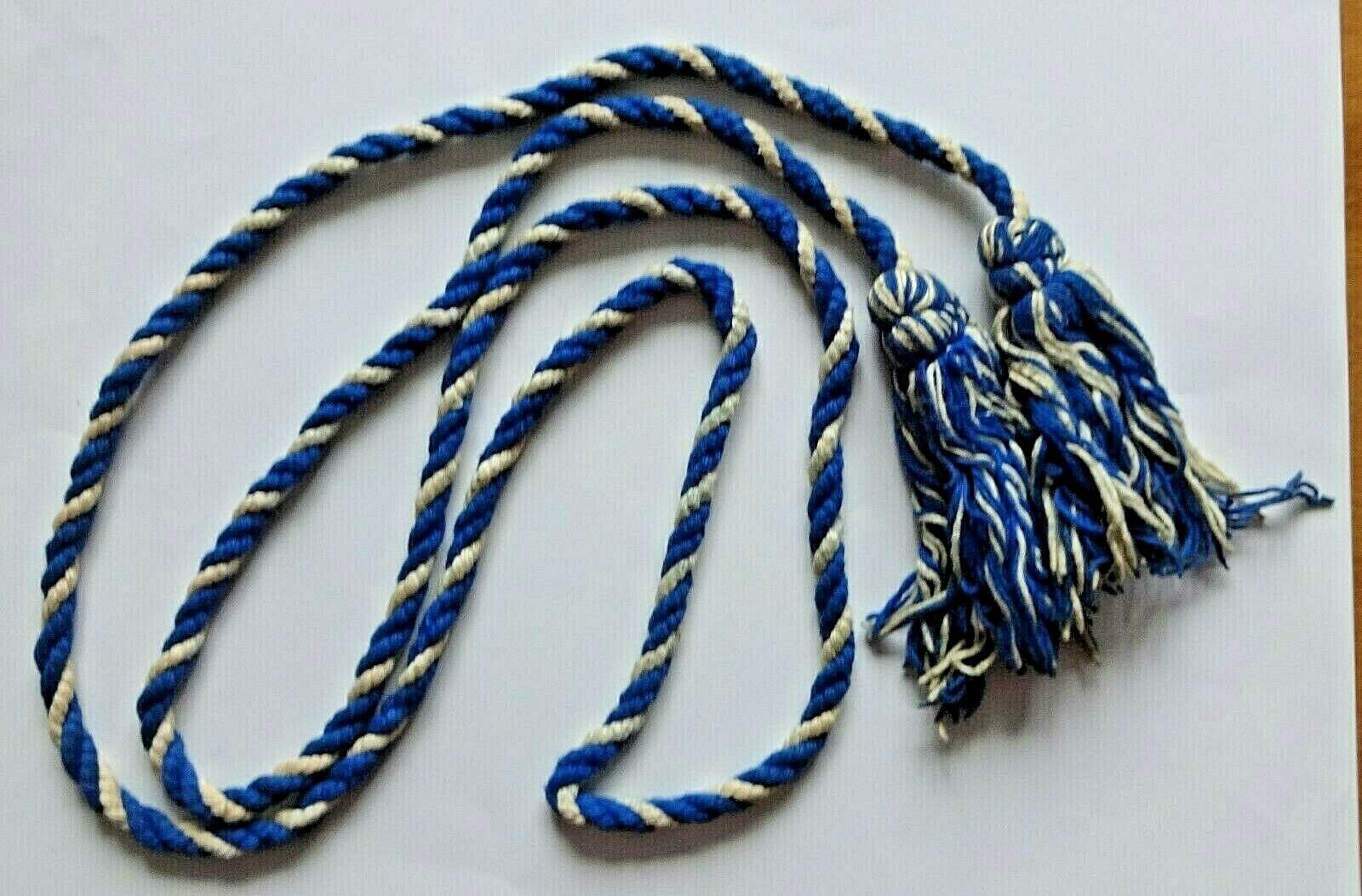 is reintroduced in 1957 (The Canadian Guider, September 1957), with a new set of requirements:
is reintroduced in 1957 (The Canadian Guider, September 1957), with a new set of requirements:
The candidate must be a First Class Guide and hold the Little House Emblem.
She must hold the following badges:
- First Aid, or Home Nurse, or Emergency Helper.
- Swimmer or Signaller, or Pioneer, or Fire Brigade.
- One of the following outdoor badges: Astronomer, Boatswain, Bird-watcher, Gardener, Hiker, Horsewoman, Land-girl, Naturalist, Pathfinder, Pioneer (unless already used in #2).
- One of the following handicrafts badges: Basket-weaver, Carpenter, Dairymaid, Hadywoman, Knitter, Laceworker, Leatherworker, Photographer, Poultry-farmer, Rabbit-keeper, Spinner, Stitchery, Weaver.
- One other badge of her own choice.
The All Round Cord was now an independent award that was not a pre-requisite for the Gold Cord, nor would it necessarily be earned by a Guide working towards that award.
Slight changes occurred over the next few years:
- By 1962, Camper had been added to the list of badges in Clause 3.
- In 1962, Laceworker had been eliminated and Toymaker added to the list of badges in Clause 4.
- No changes were made in 1964 or 1965
The requirements were revised in 1966 (Policy, Organization and Rules):
The candidate must be a First Class Guide and hold the following badges:
- Either Little House Emblem or Woodlore Emblem, and one badge from the other emblem.
- First Aid, and one of the following: Emergency Helper, Fire Brigade, Rescuer or Home Nurse.
- Pioneer.
- One badge from the Craft Emblem.
- Either Citizen or World Trefoil badge.
- One badge of her own choice.
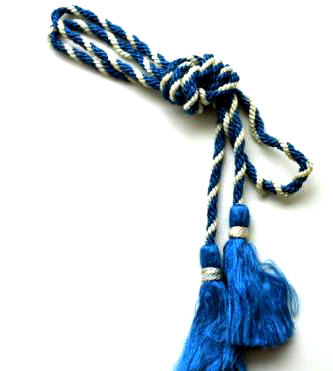 No changes are made to the requirements until 1971 (Policy, Organization and Rules), when the First and Second Class Badges were replaced by the Challenge Emblem and Badge:
No changes are made to the requirements until 1971 (Policy, Organization and Rules), when the First and Second Class Badges were replaced by the Challenge Emblem and Badge:
To qualify:
- Hold the Challenge Emblem.
- Hold the Little House Emblem and one badge from the Woodlore Emblem OR Hold the Woodlore Emblem and one badge from the Little House Emblem.
- Hold one of the following badges: Backyard Camper, Junior Camper or Outdoor Adventure and four other badges.
- Learn about three organizations or agencies which help others.
At this time, the All Round Cord became a requirement for the Canada Cord. No further changes were made until 1979, when Pathfinders were introduced, and the All Round Cord became the highest award for Guides.
The new requirements were set out in The Bridge, a transitional booklet used during the implementing of the new age groupings between 1979 and 1981.
All Round Cord:
- Hold the Adventure and Voyageur Challenges.
- Hold the History or World Trefoil Badge.
- Hold one of the following badges: Explorer, Hiker, Neighbourhood, Outdoor Adventure.
- Hold one of the following badges: Homemaker, Cook, Seamstress, Handywoman.
- Hold one of the following badges: Junior Camper, Camp Skills.
- Hold one of the following badges: Fire Safety, First Aid – Stage II, Home Nurse, Rescuer.
- Hold the Citizen Badge.
- Hold the Health or Keep-Fit Badge.
- Hold three other badges of your choice.
- Learn about three organizations or agencies which help others. Tell how you could work with, or contribute to, the work of one of these organizations.
- Choose and carry out a project rendering service to others. This project should be a challenge to you and must be approved and evaluated by your Company and the person(s) for whom the service is done.
- Investigate Pathfinders. If possible, participate in a joint activity.
- Undertake a project to show what the Promise and Law mean to you. Present this to your Company, or any small group of Guides. (This could take the form of artwork, poem, story, song, speech, drama, photography, or any other form you may choose.)
Minor changes would be made to the All Round Cord over the next few years:
- In 1982 (The Guide Program), Backyard Camper is added to the options for Clause 5; Clause 6 is revised to be Fire Safety, First Aid or Rescuer
- No changes were made in 1983 or 1985 (The Guide Program).
 By 1990 (The Guide Program), the requirements were still similar, but had been revised down to 10 Clauses:
By 1990 (The Guide Program), the requirements were still similar, but had been revised down to 10 Clauses:
- I hold the complete Adventure Challenge and Voyageur Challenge.
- I hold one of the following badges: History, World Trefoil, or World Neighbour Badge.
- I hold the Camp Badge and four of the following: Astronomer, Bird Watcher, Conservationist, Ecologist, Forestry, Explorer, Hiker, Naturalist, Outdoor Adventure, Stalker, Tracker, Wildflower.
- I hold one of the following badges: Cook, Handywoman, Homemaker, Seamstress.
- I hold one of the following badges: Fire Safety, First Aid, Rescuer.
- I hold the Citizen and Law Awareness Badges.
- I hold one of the following badges: Athlete, Health, or Keep-Fit.
- I have learned about three organizations or agencies which help others. I have told how I could work with or contribute to the work of one of these.
- I have chosen and carried out a project in which I gave service to others. This project was a challenge to me and was approved and evaluated by my Company and the person(s) to whom I gave the service.
- I have done a project which shows what the Promise and Law mean to me. I have presented this to my Company or a small group of Guides. The form of the presentation was: artwork, song, photography, poem, speech, story, drama, other.
The All Round Cord was discontinued with the introduction of the new Guide Program: For Fun & Challenge in September 1992. The 1992-1993 Guiding Year was one of transition, and the final group of Guides to earn the All Round Cord did so in June 1993.
Sources:
- Baden-Powell, Robert. Girl Guiding (Girl Guides Association, September 1921 – 6th Edition)
- Baden-Powell, Robert & Agnes. How Girls Can Help to Build Up the Empire (Girl Guides Association, 1912)
- Baden-Powell, Robert & Agnes. The Scheme for Girl Guides (Girl Guides Association, November 1909)
- Guiding For You (Girl Guides of Canada, 1974, 1975, 1977)
- Policy, Organization and Rules (Canadian Girl Guides Association/Girl Guides of Canada, 1943, 1948, 1950, 1953, 1956, 1959, 1962, 1964, 1965, 1966, 1967, 1968, 1969, 1970, 1971, 1972, 1973)
- Policy, Organization & Rules (Girl Guides Association, 1935, 1939)
- Rules, Policy & Organization (Girl Guides Association, 1921, 1927, 1931, 1934)
- The Bridge (Girl Guides of Canada, July 1979)
- The Guide Program (Girl Guides of Canada, 1982, 1983, 1985, 1990)
- The Canadian Guider, 1956-1957




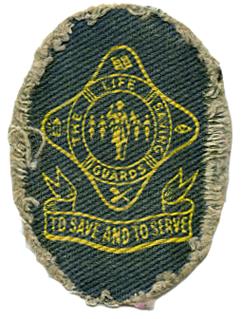

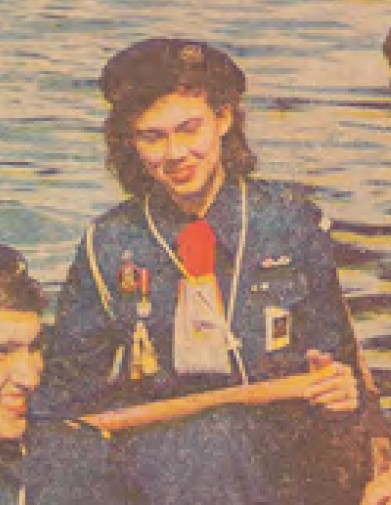

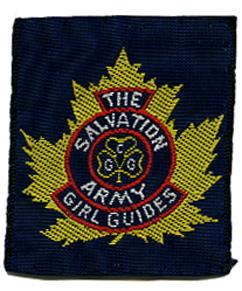
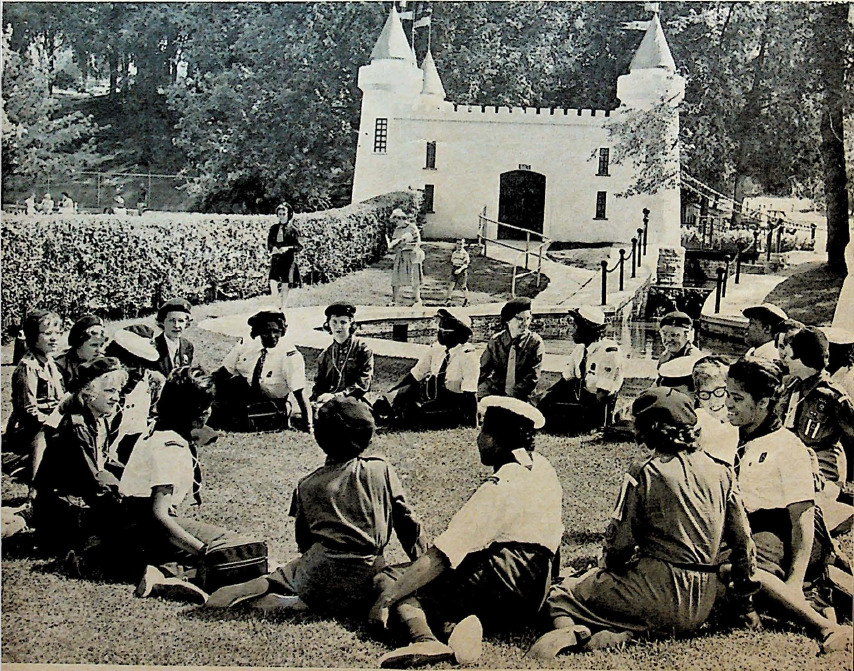
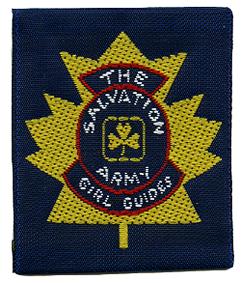
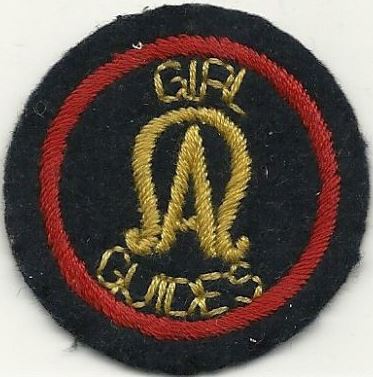

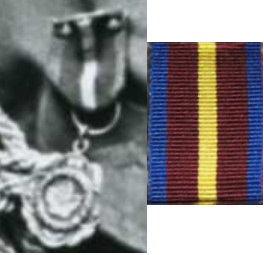
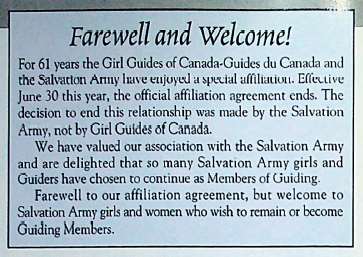
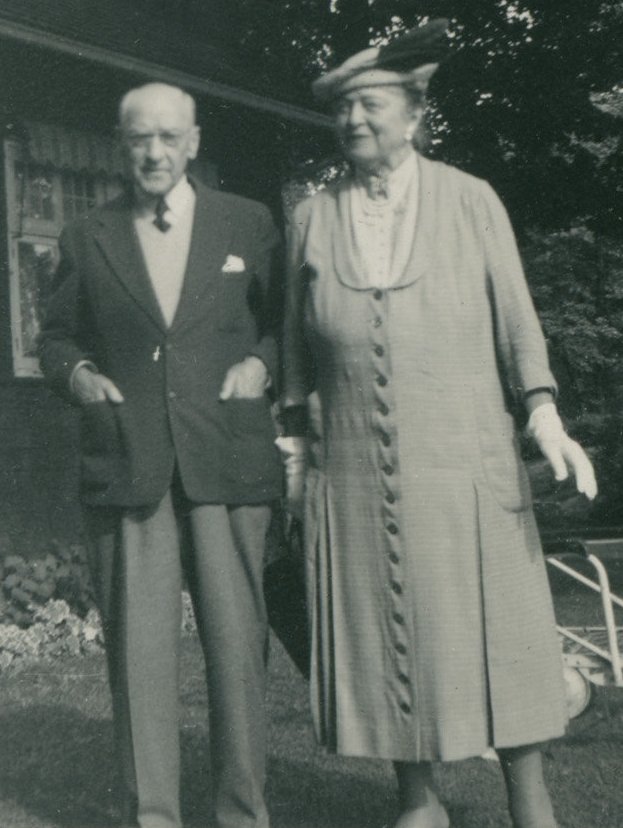

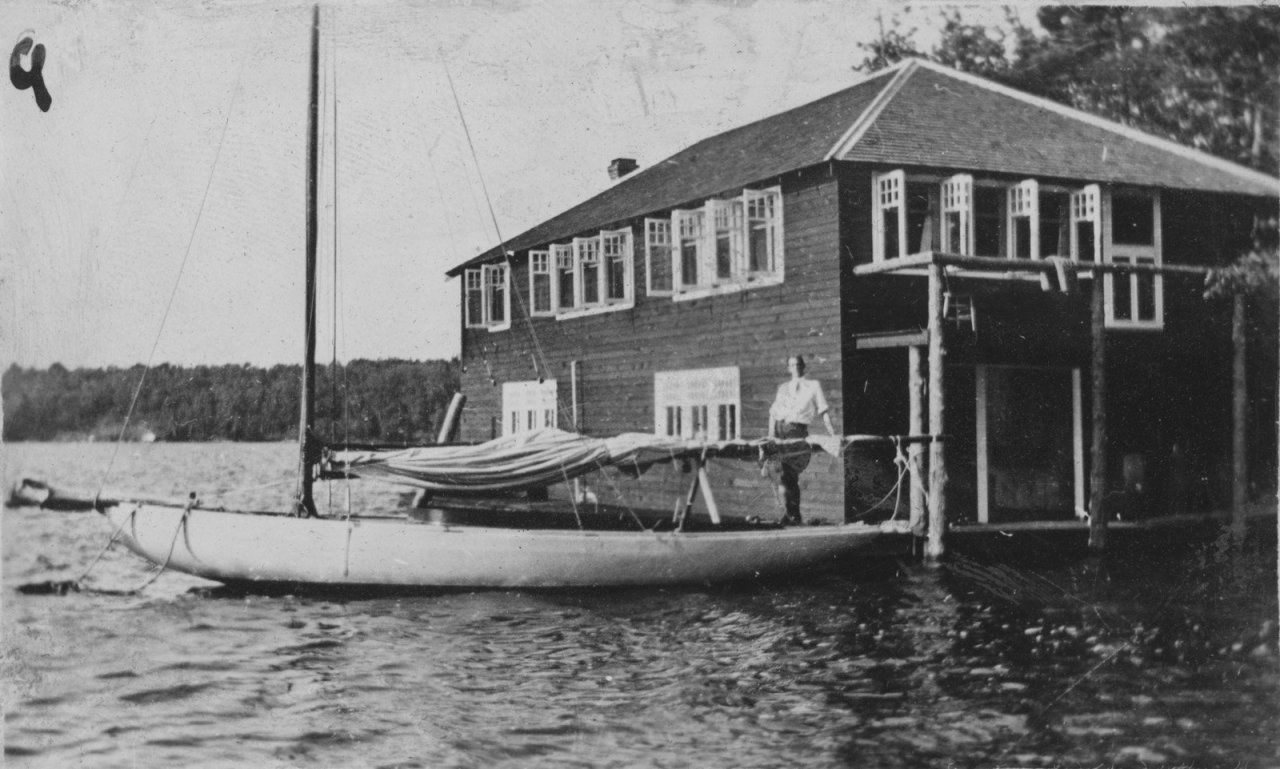
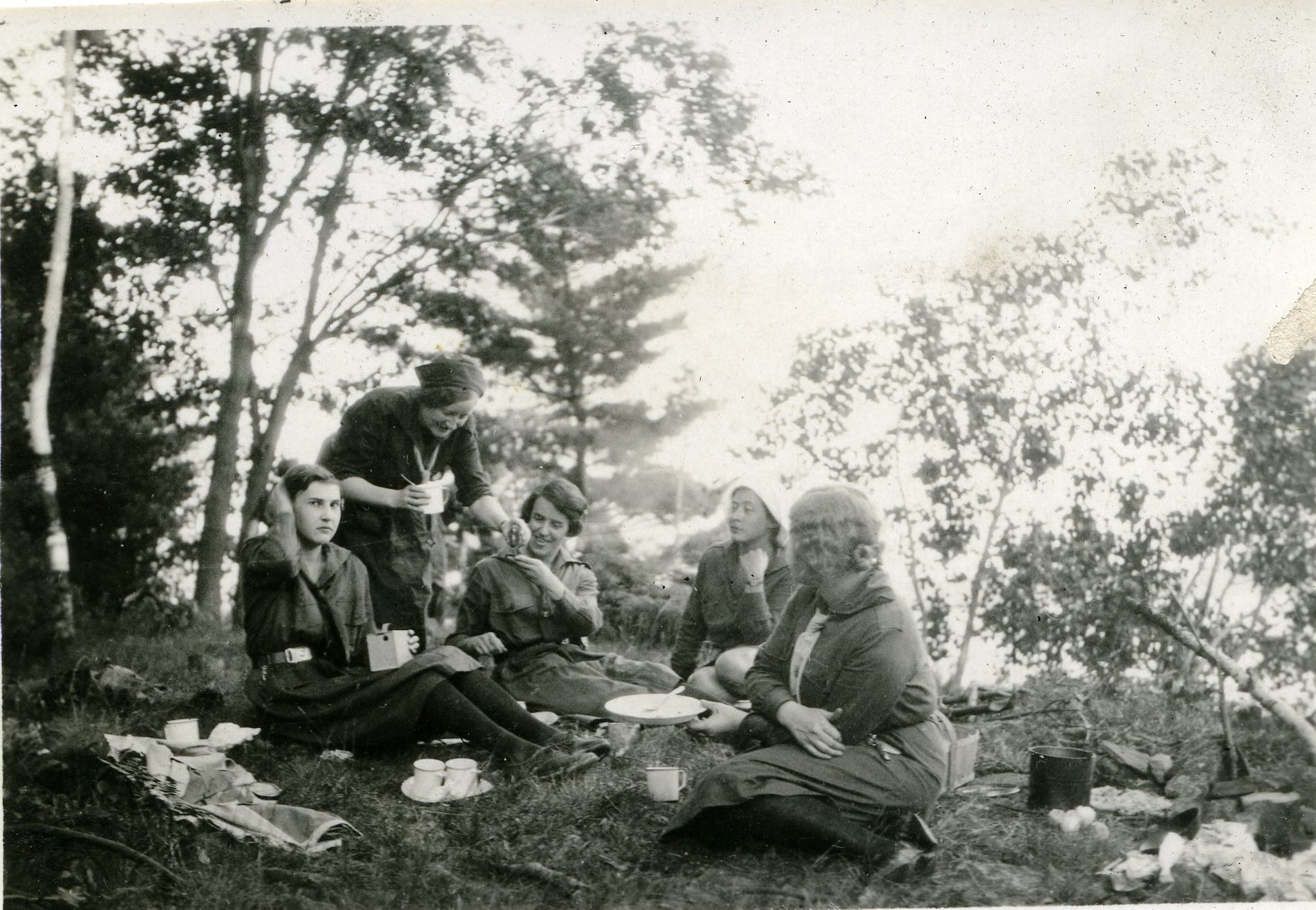
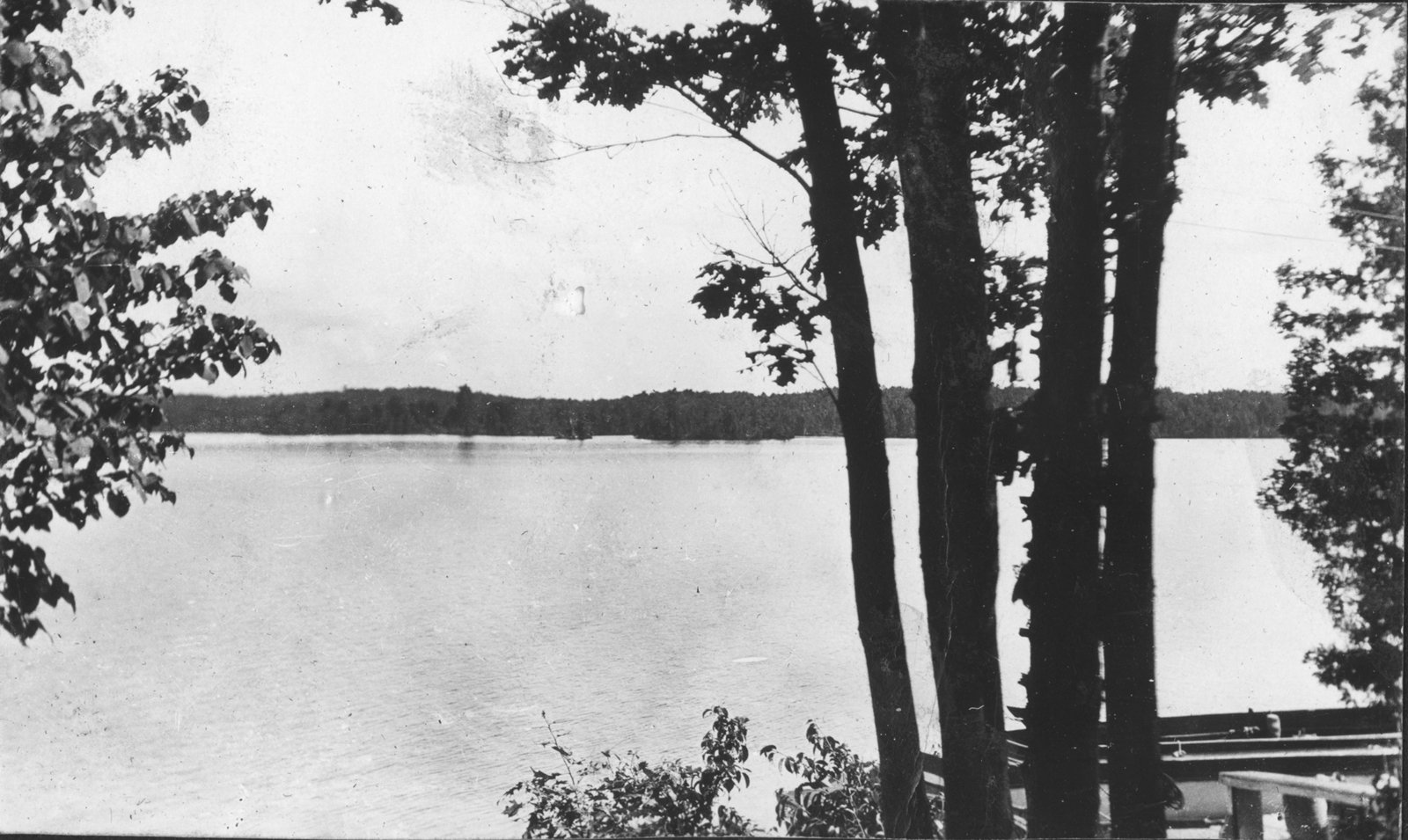
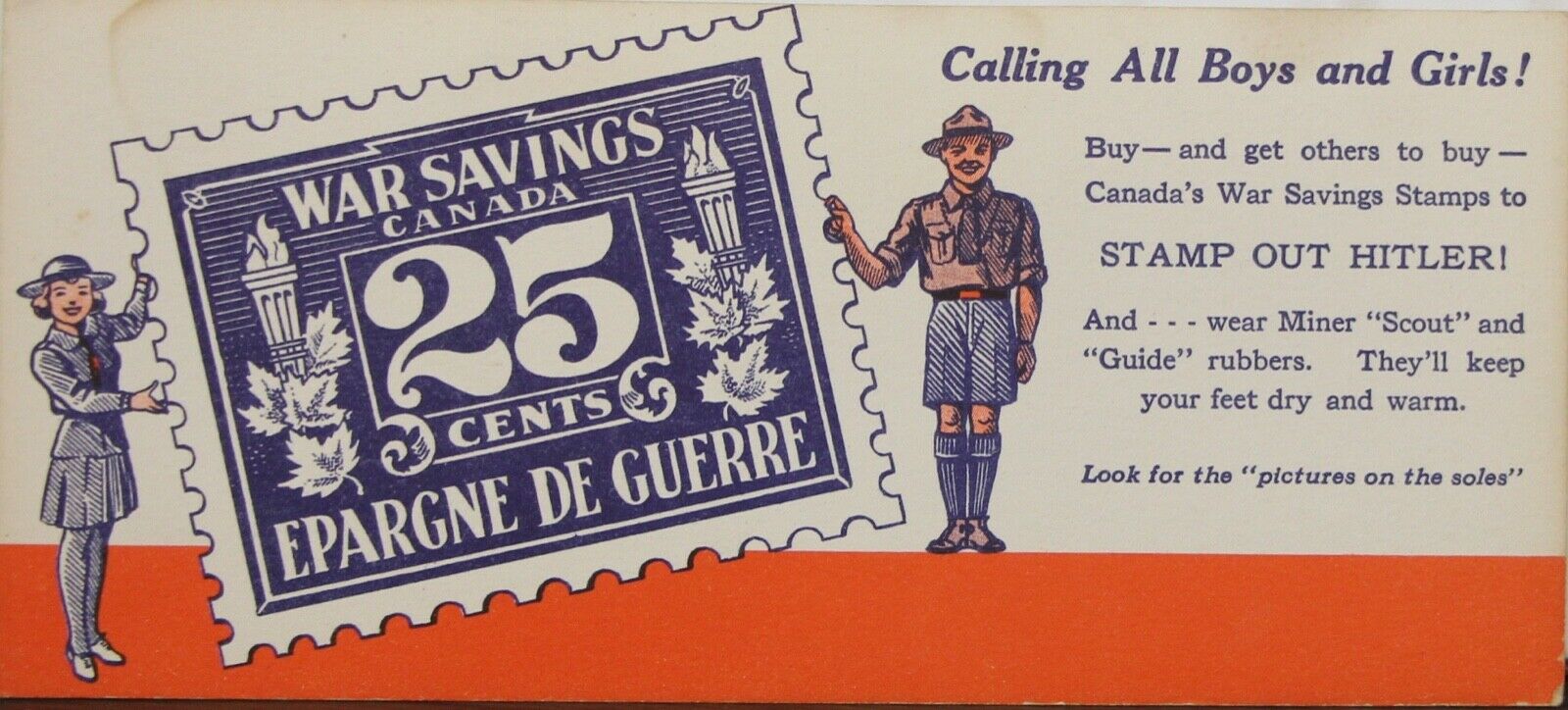 Although we in Canada fared well, during the Second World War, our entire mode of living changed. Some foods were rationed, materials for civilian manufacture were scarce; families were uprooted, with fathers, brothers, and even sisters joining the armed services. Every restaurant and place of public gathering carried placards like “These Walls Have Ears,” “Zipper Your Lips,” and “Silence is Golden.”
Although we in Canada fared well, during the Second World War, our entire mode of living changed. Some foods were rationed, materials for civilian manufacture were scarce; families were uprooted, with fathers, brothers, and even sisters joining the armed services. Every restaurant and place of public gathering carried placards like “These Walls Have Ears,” “Zipper Your Lips,” and “Silence is Golden.”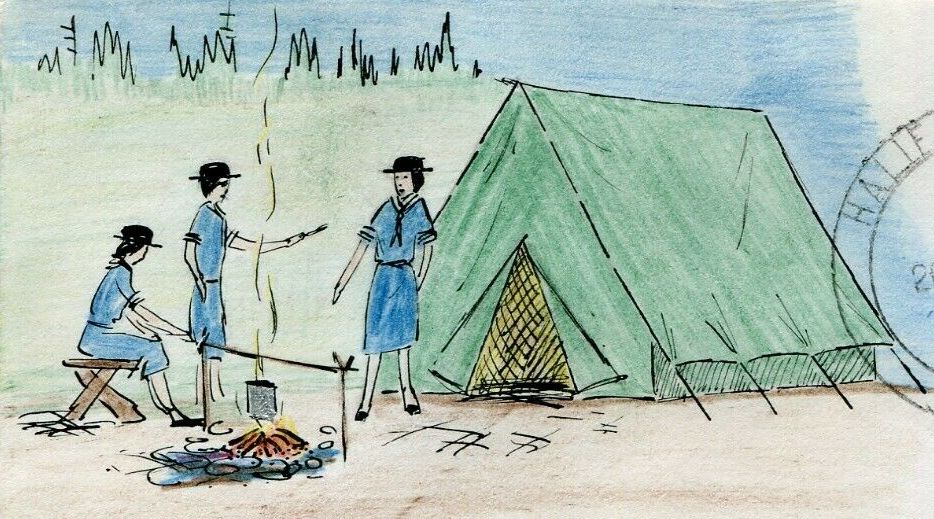 During the summer of 1942, the 5th Moncton Guide Company, under the leadership of Captain Adrienne Brown, held a 10-day camp at “Camp Y’s Acres”. The campsite was a 3-acre site on Cocagne Bay operated by Moncton’s YWCA. Directly across from the site, was Cocagne Island and the Northumberland Strait.
During the summer of 1942, the 5th Moncton Guide Company, under the leadership of Captain Adrienne Brown, held a 10-day camp at “Camp Y’s Acres”. The campsite was a 3-acre site on Cocagne Bay operated by Moncton’s YWCA. Directly across from the site, was Cocagne Island and the Northumberland Strait.  “Oh you must be crazy,” another offered. Nevertheless, they decided to take the signals down, though they made no sense. “It’s a code,” they whispered excitedly. … They felt they had no choice but to tell, for the security of their country was at stake.
“Oh you must be crazy,” another offered. Nevertheless, they decided to take the signals down, though they made no sense. “It’s a code,” they whispered excitedly. … They felt they had no choice but to tell, for the security of their country was at stake.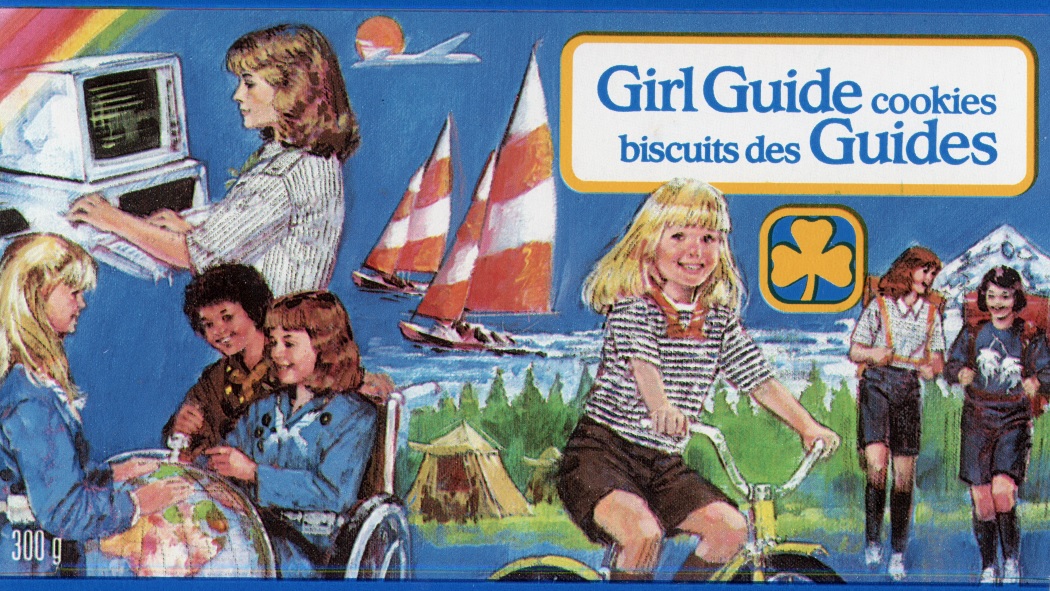 Many people recall that Girl Guides sold Peanut Butter Cookies at some point, but few can say when or for how long these cookies were available!
Many people recall that Girl Guides sold Peanut Butter Cookies at some point, but few can say when or for how long these cookies were available!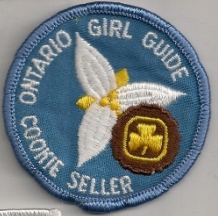 Introducing
Introducing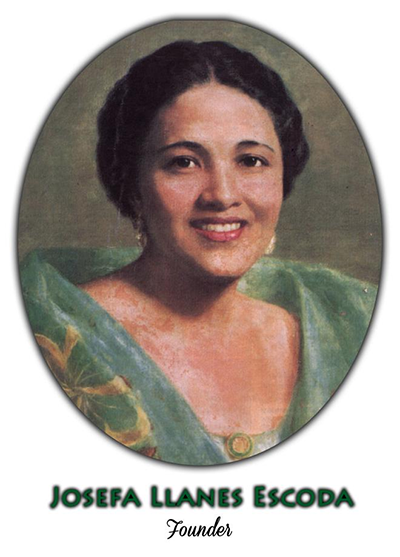 Josefa Llanes Escoda founded the Girl Scouts of the Philippines in 1940, but she would not live to see the association take its place on the world stage. Here is her story:
Josefa Llanes Escoda founded the Girl Scouts of the Philippines in 1940, but she would not live to see the association take its place on the world stage. Here is her story: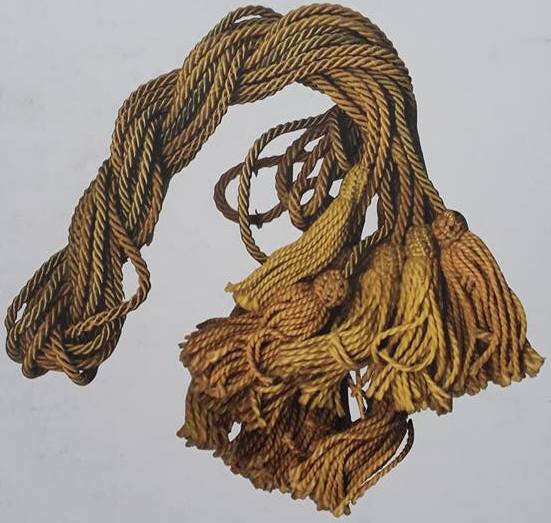 First Class
First Class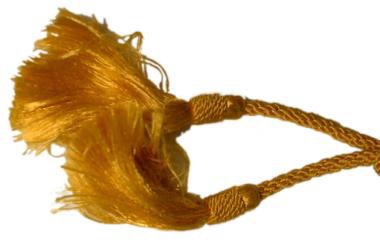 As with all things, the Second World War brought major changes to the Gold Cord. By 1943, the requirements in
As with all things, the Second World War brought major changes to the Gold Cord. By 1943, the requirements in 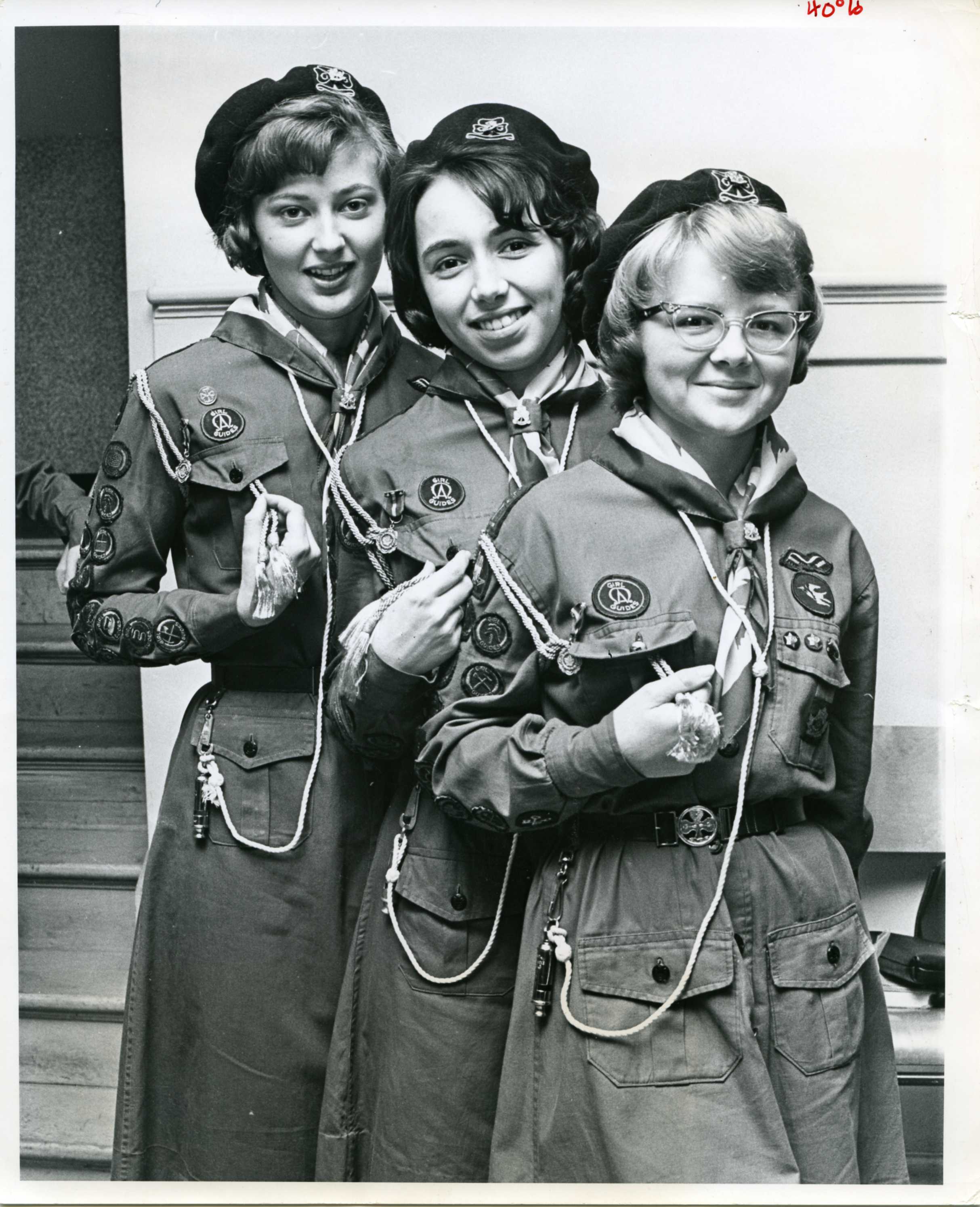
 The first Guiding Publication,
The first Guiding Publication,  At this time, the All Round Cord was a stepping stone to the Order of the Silver Fish, but not a pre-requisite.
At this time, the All Round Cord was a stepping stone to the Order of the Silver Fish, but not a pre-requisite. Proficiency Badge:
Proficiency Badge:
 No changes are made to the requirements until 1971 (
No changes are made to the requirements until 1971 ( By 1990
By 1990